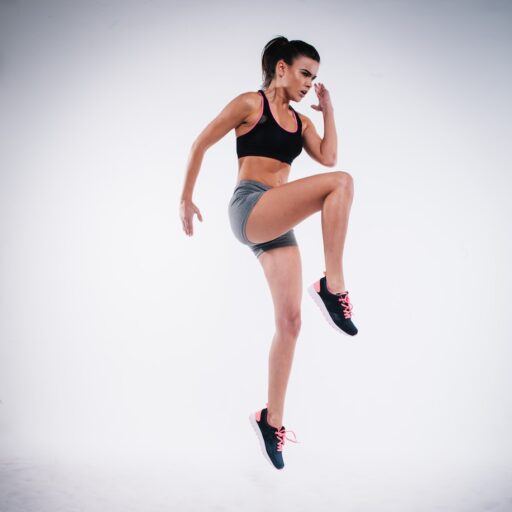Support our educational content for free when you purchase through links on our site. Learn more
Is Nike the Largest Athletic Company in [2023]?

If you're familiar with the world of athletics, you've probably heard of Nike. But just how big is this athletic brand? In this article, we'll explore whether Nike is indeed the largest athletic company in the world. We'll dive into the company's history, its market share, and its impact on the athletic industry. By the end of this article, you'll have a better understanding of Nike's prominence in the global athletic market. So let's lace up our shoes and get started!
Table of Contents
- Introduction
- Company Background
- Market Dominance
- Nike vs. Competitors
- Product Innovation
- Corporate Social Responsibility
- FAQ
- Useful Links
- References
Introduction
Nike is a multinational corporation that specializes in designing, manufacturing, and selling athletic footwear, apparel, equipment, and accessories. The brand achieved global recognition and popularity through innovative marketing strategies and high-quality products. But does their success make them the largest athletic company in the world? Let's find out.
Company Background
Nike was founded in 1964 by Bill Bowerman and Phil Knight under the name "Blue Ribbon Sports." Originally operating as a distributor for the Japanese shoe company Onitsuka Tiger (now ASICS), Nike transitioned to manufacturing its own footwear in the early 1970s. The company gained significant attention when they enlisted the help of renowned athlete Michael Jordan to create the Air Jordan line in 1984. This collaboration revolutionized the sneaker industry and propelled Nike to new heights.
Market Dominance
Nike's market dominance is substantial, and it's undoubtedly one of the most influential players in the athletic industry. According to various sources, including Forbes and Statista, Nike consistently holds a significant market share. In [2023], the company's revenue surpassed $44 billion USD, a testament to its widespread appeal and popularity among athletes and fitness enthusiasts.
Nike vs. Competitors
When comparing Nike to its competitors, there are several key factors to consider, including market share, brand recognition, and revenue.
Nike vs. Adidas
One of Nike's primary competitors is Adidas. While both brands enjoy global recognition and a massive following, Nike currently holds a larger market share. According to a survey conducted by Statista in [2023], Nike's market share stood at approximately 25.95% compared to Adidas' 12.39%. However, it's important to note that market dynamics can fluctuate over time, and Adidas continues to innovate and capture market share.
Nike vs. Under Armour
Another noteworthy competitor of Nike is Under Armour. Although Under Armour is smaller in terms of market share, the brand has gained considerable popularity in recent years, particularly in the performance apparel segment. As of [2023], Nike held a market share of 25.95%, while Under Armour's market share was approximately 5.42%.
Product Innovation
Nike has established itself as an industry leader through continuous product innovation. The brand invests heavily in research and development to create cutting-edge athletic gear that enhances athletic performance and provides greater comfort. Some notable innovations in recent years include:
- Flyknit Technology: Nike's Flyknit technology revolutionized footwear design by creating lightweight, form-fitting shoes that provide enhanced breathability and flexibility.
- Nike Air: The Nike Air cushioning system, introduced in the late 1970s, has become an iconic feature of many Nike sneakers, offering superior impact protection and cushioning.
- Nike Dri-FIT: The Dri-FIT technology wicks away moisture from the skin, keeping athletes dry and comfortable during intense workouts.
- Nike Vaporfly: The Nike Vaporfly series of running shoes has gained significant attention for its innovative design, offering exceptional energy return and helping athletes achieve faster race times.
These innovations, among others, have solidified Nike's position as a leader in athletic footwear and apparel.
Corporate Social Responsibility
Nike has also made substantial efforts in the realm of corporate social responsibility (CSR). The brand has faced criticism in the past due to labor practices in its global supply chain. However, in recent years, Nike has implemented significant improvements and initiatives to address these concerns and promote ethical practices within the industry. The company's commitment to sustainability, diversity, and fair labor practices has helped establish a positive reputation in the athletic community.
FAQ
Is Nike the largest sports brand?
Yes, Nike is widely considered the largest sports brand in the world. With its extensive market share, revenue, and global recognition, Nike has earned its position as a dominant player in the athletic industry.
Who is bigger, Nike or Adidas?
In terms of market share, Nike currently holds a larger share than Adidas. As of [2023], Nike's market share stands at approximately 25.95%, while Adidas' market share is around 12.39%.
Where does Nike rank in the world?
Nike consistently ranks among the top companies globally in terms of brand value, market share, and revenue. While exact rankings may vary slightly based on the criteria, Nike often finds itself in the top positions among athletic brands.
Useful Links
- Nike Official Website
- Nike Products on Amazon
- Adidas Official Website
- Adidas Products on Amazon
- Under Armour Official Website
- Under Armour Products on Amazon
References
- Forbes – Nike's Revenue
- Statista – Sports Apparel Market Share
- Statista – Market Share of Nike and Adidas
- Nike – Sustainability
- Nike – Corporate Responsibility





